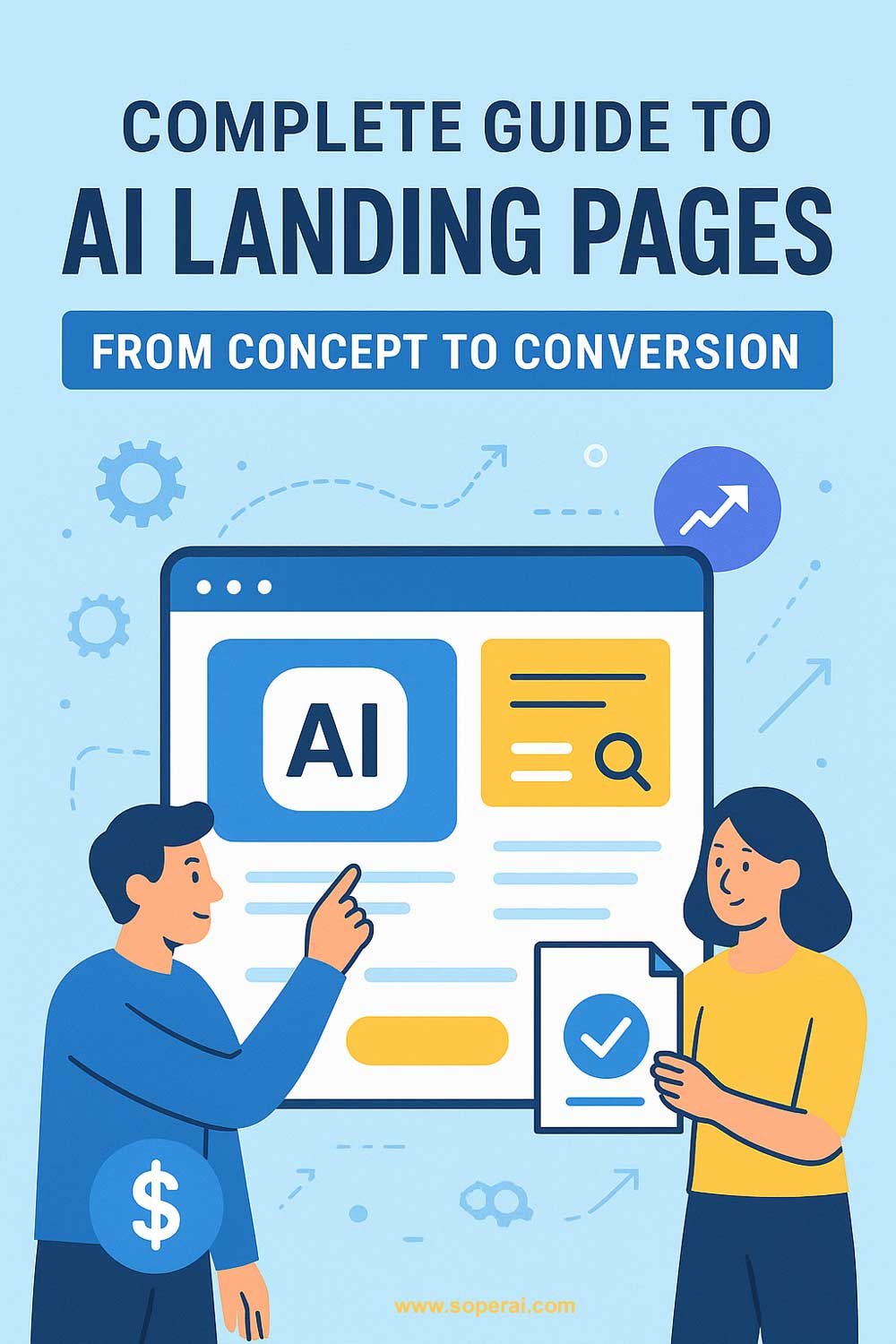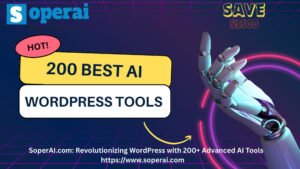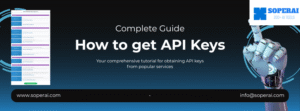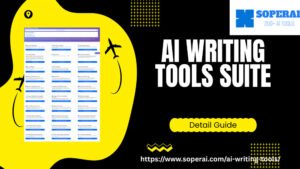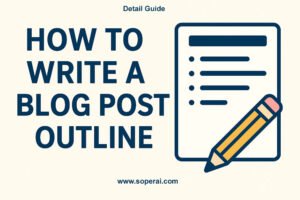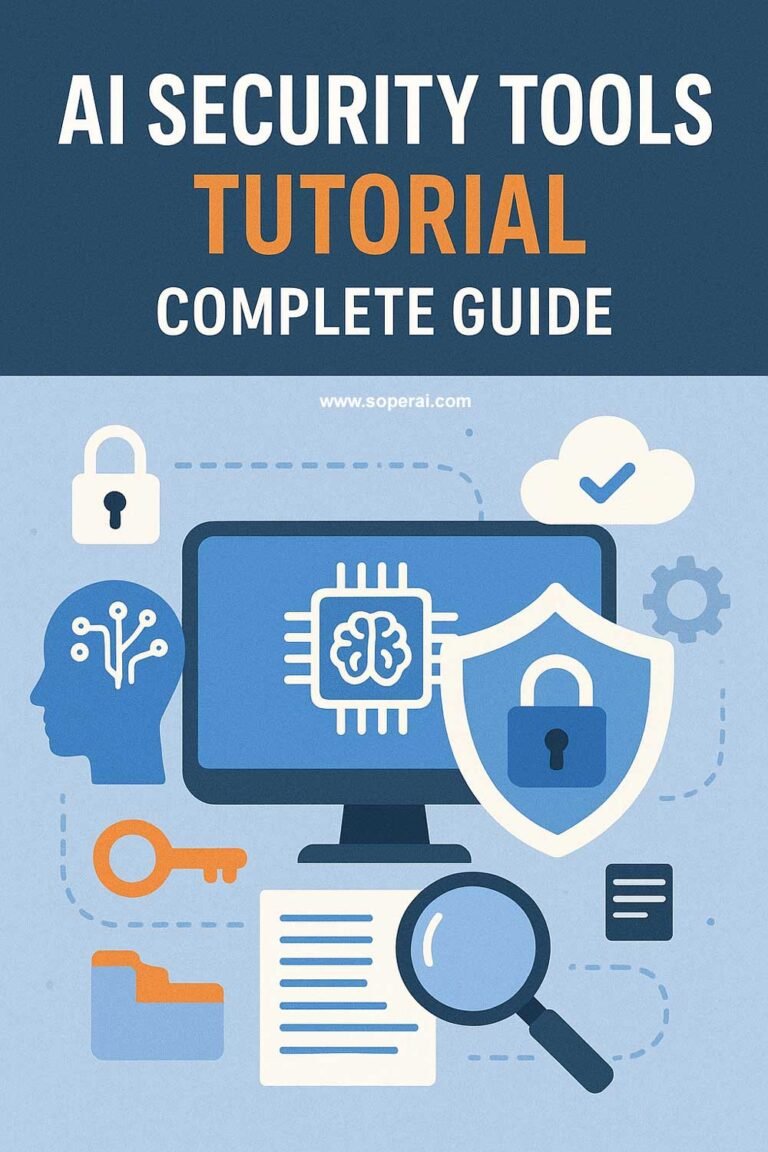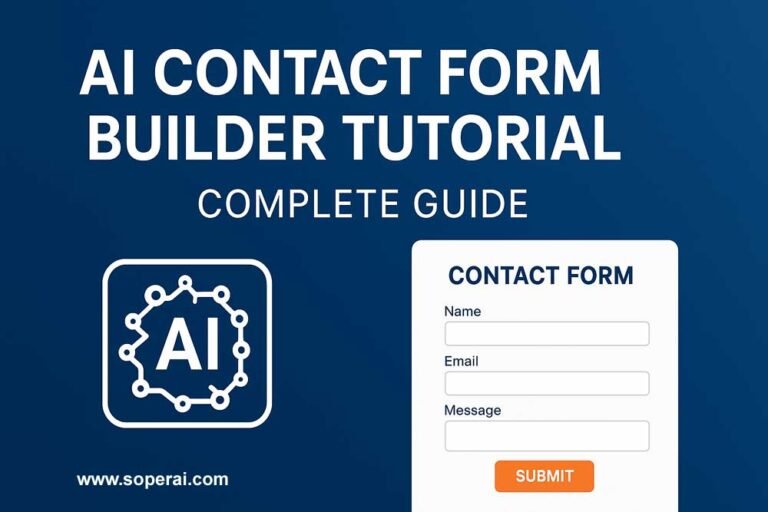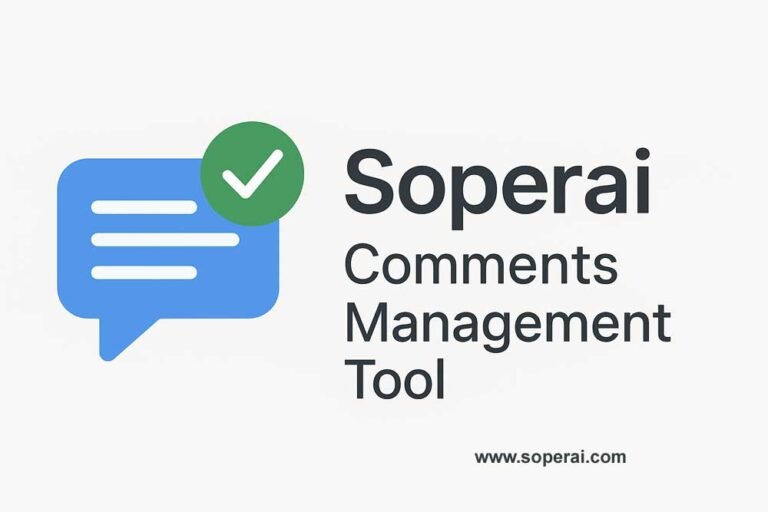Table of Contents
- Introduction to AI Landing Pages
- Understanding AI Landing Page Technology
- Getting Started with AI Landing Page Creation
- Key Features and Benefits
- Step-by-Step Creation Process
- API Integration for Advanced Features
- Best Practices and Optimization
- Troubleshooting Common Issues
Introduction to AI Landing Pages {#introduction}
AI landing pages represent a revolutionary approach to web design that combines artificial intelligence with conversion optimization. These pages are automatically generated using machine learning algorithms that understand your business needs and create professional, high-converting landing pages without requiring technical expertise.
What Are AI Landing Pages?
AI landing pages are web pages created through artificial intelligence that automatically:
- Generate compelling copy tailored to your business
- Select optimized imagery that resonates with your audience
- Create interactive data visualizations
- Implement conversion-focused design principles
- Ensure mobile responsiveness and pixel-perfect layouts
Who Can Benefit?
- Startup Founders: Launch professional web presence quickly
- Marketing Teams: Create campaign-specific landing pages at scale
- Small Business Owners: Establish online presence without technical skills
- Digital Agencies: Deliver client projects faster and more efficiently
- E-commerce Businesses: Promote products with conversion-optimized pages
Understanding AI Landing Page Technology {#technology}
Core AI Components
Machine Learning Algorithms
- Natural Language Processing (NLP) for content generation
- Computer vision for image selection and optimization
- Pattern recognition for layout optimization
- Predictive analytics for conversion rate optimization
Automated Features
- Content generation based on business requirements
- Strategic placement of call-to-action buttons
- Responsive design adaptation
- SEO optimization
- Performance analytics integration
Technical Advantages
- Speed: Generate complete pages in seconds
- Consistency: Maintain brand standards across all pages
- Optimization: Built-in conversion rate optimization
- Accessibility: No coding or design skills required
- Scalability: Create multiple variations effortlessly
Getting Started with AI Landing Page Creation {#getting-started}
Prerequisites
Before creating your AI landing page, ensure you have:
- Clear business objectives
- Target audience definition
- Brand assets (logo, colors, fonts)
- Key messaging points
- Call-to-action goals
Initial Setup Steps
- Access the Platform
- Navigate to the AI Landing Page Generator
- Create your account or log in
- Verify your business email address
- Define Your Requirements
- Business type and industry
- Target audience demographics
- Primary conversion goals
- Preferred style and tone
- Prepare Your Content
- Company description
- Product or service details
- Unique value propositions
- Contact information
Key Features and Benefits {#features}
Automated Content Creation
Compelling Headlines
- AI analyzes your business to create attention-grabbing headlines
- A/B test multiple variations automatically
- Optimize for search engines and conversions
Persuasive Copy
- Generate benefit-focused content
- Create urgency and social proof elements
- Maintain consistent brand voice
Visual Elements
- Auto-select relevant stock images
- Create custom infographics and charts
- Generate interactive data visualizations
- Optimize images for web performance
Conversion Optimization
Strategic Layout Design
- Position elements based on user behavior patterns
- Implement proven conversion frameworks
- Create clear visual hierarchy
- Ensure mobile-first responsive design
Call-to-Action Optimization
- Strategic placement of CTA buttons
- Color and text optimization
- Multiple conversion paths
- Form optimization for lead capture
Technical Benefits
- No Coding Required: Visual editor with drag-and-drop functionality
- Mobile Responsive: Automatic adaptation to all screen sizes
- Fast Loading: Optimized code and compressed assets
- SEO Ready: Built-in search engine optimization
- Analytics Integration: Track performance metrics automatically
Step-by-Step Creation Process {#creation-process}
Step 1: Project Initialization
- Click “Create Landing Page” button
- Select your industry category
- Choose your business model (B2B, B2C, E-commerce, etc.)
- Define your primary goal (lead generation, sales, sign-ups)
Step 2: Business Information Input
Basic Details
- Company name and description
- Products or services offered
- Target market and audience
- Geographic location and markets
Brand Guidelines
- Upload logo and brand assets
- Define color palette
- Specify font preferences
- Set tone and voice guidelines
Step 3: Content Generation
AI Analysis Phase
- The system analyzes your inputs
- Researches your industry and competitors
- Identifies key messaging opportunities
- Generates multiple content variations
Content Review and Editing
- Review AI-generated headlines and copy
- Make adjustments to match your preferences
- Approve or request regeneration
- Fine-tune messaging for your audience
Step 4: Design and Layout
Template Selection
- Choose from AI-recommended templates
- Preview different layout options
- Consider mobile and desktop views
- Select based on conversion goals
Visual Customization
- AI selects optimized images
- Customize colors and fonts
- Adjust layout elements
- Add custom graphics or videos
Step 5: Call-to-Action Setup
Primary CTA Configuration
- Define the main action you want visitors to take
- Set up form fields for lead capture
- Configure thank you pages
- Set up email notifications
Secondary CTA Options
- Add alternative conversion paths
- Create social sharing buttons
- Include contact information
- Set up chat or support widgets
Step 6: Review and Optimize
Preview and Testing
- Review the complete landing page
- Test on different devices and browsers
- Check loading speed and performance
- Verify all links and forms function properly
SEO Optimization
- Review meta tags and descriptions
- Optimize page titles and headings
- Ensure proper URL structure
- Add schema markup for rich snippets
Step 7: Launch and Monitor
Publishing
- Choose your domain or subdomain
- Configure DNS settings if needed
- Set up SSL certificate
- Launch your landing page
Performance Monitoring
- Set up analytics tracking
- Monitor conversion rates
- Track user behavior and engagement
- Analyze performance metrics
API Integration for Advanced Features {#api-integration}
Understanding API Integration Service
For businesses requiring advanced functionality, professional API integration services can enhance your AI landing pages with powerful third-party capabilities.
What APIs Can Be Integrated?
Marketing and Analytics
- Google Analytics and Google Tag Manager
- Facebook Pixel and conversion tracking
- Email marketing platforms (Mailchimp, Constant Contact)
- CRM systems (Salesforce, HubSpot)
Payment and E-commerce
- Stripe, PayPal, Square payment processing
- Shopping cart functionality
- Inventory management systems
- Shipping and logistics APIs
Communication and Support
- Live chat systems
- Customer support platforms
- SMS and notification services
- Social media integration
API Integration Process
Step 1: Consultation and Planning
- Identify required functionality
- Assess technical requirements
- Plan integration architecture
- Estimate timeline and costs
Step 2: API Registration
- Professional registration with API providers
- Account setup using your business credentials
- API key and authentication configuration
- Security and compliance setup
Step 3: Technical Implementation
- Custom code development
- Integration testing
- Security validation
- Performance optimization
Step 4: Quality Assurance
- Comprehensive functionality testing
- Cross-browser compatibility testing
- Mobile responsiveness verification
- Performance benchmarking
Investment Considerations
Professional Integration Fee: $50 one-time fee
- Complete setup and configuration
- Technical implementation
- Testing and quality assurance
- Documentation and handover
API Usage Costs: Varies by provider
- Most APIs offer free tiers for testing
- Usage-based pricing for production
- Monthly or annual subscription options
- Payment method required for most services
Getting API Integration Support
Contact Methods for Professional Service
- Email consultation for detailed requirements
- Phone consultation for immediate needs
- Online form submission for project quotes
- Live chat for quick questions
Best Practices and Optimization {#best-practices}
Content Best Practices
Headlines and Copy
- Keep headlines clear and benefit-focused
- Use action-oriented language
- Include specific numbers and results when possible
- Test multiple variations to find what works best
Visual Content
- Use high-quality, relevant images
- Ensure fast loading times
- Optimize images for different screen sizes
- Include alt text for accessibility
Design Best Practices
Layout and Structure
- Follow the inverted pyramid content structure
- Use white space effectively
- Create clear visual hierarchy
- Ensure logical flow from top to bottom
Mobile Optimization
- Design mobile-first
- Test on various devices and screen sizes
- Ensure touch-friendly button sizes
- Optimize loading speed for mobile networks
Conversion Optimization
Call-to-Action Best Practices
- Use contrasting colors for CTA buttons
- Place CTAs above the fold and throughout the page
- Use action words like “Get,” “Start,” “Download”
- Test different button sizes and positions
Form Optimization
- Keep forms as short as possible
- Use clear, descriptive field labels
- Include progress indicators for longer forms
- Provide clear privacy and data usage information
Performance Optimization
Speed and Loading
- Optimize images and media files
- Minimize HTTP requests
- Use content delivery networks (CDNs)
- Enable browser caching
SEO Optimization
- Research and include relevant keywords
- Optimize meta titles and descriptions
- Use proper heading structure (H1, H2, H3)
- Create descriptive, SEO-friendly URLs
Troubleshooting Common Issues {#troubleshooting}
Technical Issues
Page Loading Problems
- Check internet connection and server status
- Clear browser cache and cookies
- Try accessing from different browsers
- Contact technical support if issues persist
Mobile Display Issues
- Verify responsive design settings
- Test on multiple devices and screen sizes
- Check image sizing and compression
- Update mobile-specific CSS if needed
Form Submission Problems
- Verify all required fields are completed
- Check email address format and validity
- Ensure form action URLs are correct
- Test form functionality across different browsers
Content and Design Issues
Generated Content Not Matching Expectations
- Provide more detailed business information
- Use the content regeneration feature
- Manually edit AI-generated content
- Contact support for personalized assistance
Design Elements Not Displaying Properly
- Check browser compatibility
- Verify CSS and JavaScript are loading
- Clear cache and refresh the page
- Test with different browsers
Performance and Conversion Issues
Low Conversion Rates
- Analyze user behavior with analytics
- Test different headlines and CTAs
- Simplify forms and reduce friction
- Consider A/B testing different versions
Poor Search Engine Rankings
- Review and optimize SEO elements
- Ensure content is original and valuable
- Build quality backlinks to your page
- Submit sitemap to search engines
Getting Additional Help
Support Resources
- Access video tutorials and documentation
- Join community forums and user groups
- Contact customer support via multiple channels
- Schedule one-on-one consultation sessions
Professional Services
- Custom development and integration
- Advanced analytics setup
- Conversion rate optimization consulting
- Ongoing maintenance and updates
Conclusion
AI landing pages represent the future of web design, combining the power of artificial intelligence with proven conversion optimization techniques. By following this comprehensive guide, you can create professional, high-converting landing pages that drive real business results without requiring technical expertise.
The key to success lies in providing clear business information to the AI system, following best practices for content and design, and continuously monitoring and optimizing your pages based on performance data. Whether you’re a startup looking to establish your web presence or an established business seeking to improve conversion rates, AI landing page technology offers an accessible, powerful solution for achieving your goals.
Remember that successful landing pages are not just about technology—they’re about understanding your audience, communicating value clearly, and making it easy for visitors to take the desired action. Use AI as a powerful tool to enhance your marketing efforts, but always keep your customers’ needs and preferences at the center of your strategy.
Start creating your AI-powered landing page today and experience the transformation in your digital marketing results.

